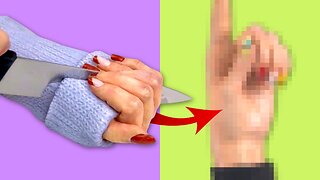Premium Only Content

Biomechanics of the upper extremity: arm abduction
This video reviews such a complex movement as arm abduction. Abduction of the arm happens in the frontal plane and can be described as the arm’s movement away from the body’s midline. So, abduction at the shoulder joint causes the free upper limb to move away from the body. It begins with the upper limb positioned parallel to the body and the hand being in an inferior position, continues with the movement of the upper limb to a position perpendicular to the body and ends with the upper limb raised above the shoulder and pointing upward.
This movement involves multiple joints and is closely related to the scapulohumeral rhythm, which can be described as a coordinated interaction between the scapula, clavicle, and humerus to achieve full abduction. It’s important to understand that the first 30 degrees of arm abduction constitute the setting phase, meaning that the movement is mainly glenohumeral, and the scapula remains stationary.
Also, the clavicle demonstrates minimal or no movement. Only after the initial 30 degrees the scapula starts to move, and the glenohumeral and scapulothoracic joints begin to move simultaneously.
-
 2:18:53
2:18:53
Badlands Media
13 hours agoDevolution Power Hour Ep. 403: Brennan Exposed & The Intel War w/ Thomas Speciale
321K70 -
 4:34
4:34
Legal Money Moves
5 days agoThe AI Panic: Are You Next?
1.61K2 -
 25:41
25:41
Robbi On The Record
2 days ago $11.34 earnedThe Billion-Dollar Lie Behind OnlyFans “Empowerment” (Her Testimony Will Shock You) | part II
34.9K24 -
 1:06:09
1:06:09
Man in America
15 hours agoExposing HAARP's Diabolical Mind Control Tech w/ Leigh Dundas
63.9K49 -
 1:47:16
1:47:16
Tundra Tactical
11 hours ago $105.36 earnedGlock Interview From Beyond The Grave//Whats the Future of Home Training??
48.7K8 -
 2:16:35
2:16:35
BlackDiamondGunsandGear
9 hours agoEBT Apocalypse? / Snap Down SHTF / After Hours Armory
19.6K9 -
 14:05
14:05
Sideserf Cake Studio
21 hours ago $15.62 earnedHYPERREALISTIC HAND CAKE GLOW-UP (Old vs. New) 💅
55.7K10 -
 28:37
28:37
marcushouse
22 hours ago $8.93 earnedSpaceX Just Dropped the Biggest Starship Lander Update in Years! 🤯
26.8K9 -
 14:54
14:54
The Kevin Trudeau Show Limitless
3 days agoThe Hidden Force Running Your Life
109K25 -
 2:16:35
2:16:35
DLDAfterDark
9 hours ago $10.00 earnedIs The "SnapPocalypse" A Real Concern? Are You Prepared For SHTF? What Are Some Considerations?
28.1K11